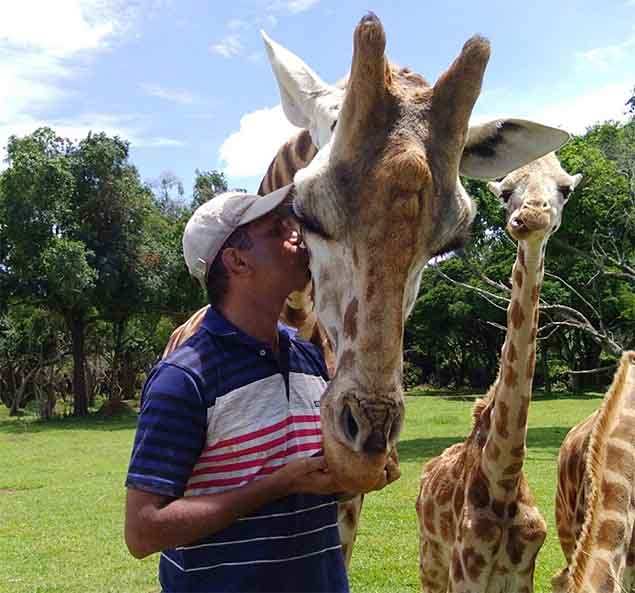
The proposal to translocate giraffes to India comes at a time when its population in Africa has declined by almost 40% over the past three decades and it’s listed as a ‘vulnerable’ species.

“If camels can survive around here, then giraffes can, too. Besides, there is no poaching threat and no one would eat them here,” Meena told TOI.
Madhya Pradesh’s wait for the Gir lions, meanwhile, continues despite a Supreme Court order. The relocation was first mooted in 2000, but never went through because Gujarat steadfastly refused to part with the majestic lions. It is the only lion state in India.

Besides the Gir lion, the MP government has been discussing several alternatives for Kuno, ranging from shifting of zoo-bred lions to translocation of cheetahs and reintroduction of tigers. Giraffe is now on that list. A mini-Africa in the works in the heart of central India.
'Giraffes unlikely to adapt to Indian ecology’
How feasible is the idea to translocate giraffes to India? TOI spoke to Thane-based conservationist Tushar Kulkarni, who is conducting genetic research on giraffes in Indian zoos, and has been invited to speak abroad on his findings. Excerpts.
Q: Did a species similar to giraffe ever exist in India?
Giraffes are native to Sub-Saharan Africa. Ancestors of giraffes, like Bramatherium and Sivatherium, lived on the Indian subcontinent about 2.5 to 6 million years ago. Giraffes are found in the wild only in Sub-Saharan Africa. Okapi, the closest relative of giraffe, is found in the wild in Democratic Republic of Congo.
Do you think giraffes can be introduced in India as a browsing herbivore species?
To my knowledge, giraffes have never been introduced in the wild in any country. They are native to Africa and have evolved to adapt to its habitat, food and terrain. We are not sure if the giraffe will adapt to the Indian habitat, vegetation and environment. India has a different ecological setup. Mostly likely, they cannot adapt.
What do you think would be the fate of such a reintroduction project?
We do not know. The giraffe has adapted to survive and thrive in a completely different habitat and environment. There are high chances it won’t survive in the Indian environment.
Is there a suitable habitat for giraffes anywhere in India?
Again, we do not know the suitability of habitat of India for giraffes. There has been no study or research that I know of.
Are there large carnivore species that can prey on giraffes if introduced in India?
It’s possible that carnivores can prey on giraffes, but they are mega fauna and not easy to hunt. Carnivores normally try to hunt giraffe calves.
Do international laws allow such introductions?
I am not aware of any international laws on this. Giraffes are translocated within Africa to repopulate areas where they have gone extinct, and to maintain or enhance the genetic diversity of giraffe in a particular area. To my knowledge, giraffe has never been introduced in the wild in any other country.
https://timesofindia.indiatimes.com/india/does-india-really-need-giraffes/articleshow/76192270.cms

No comments:
Post a Comment